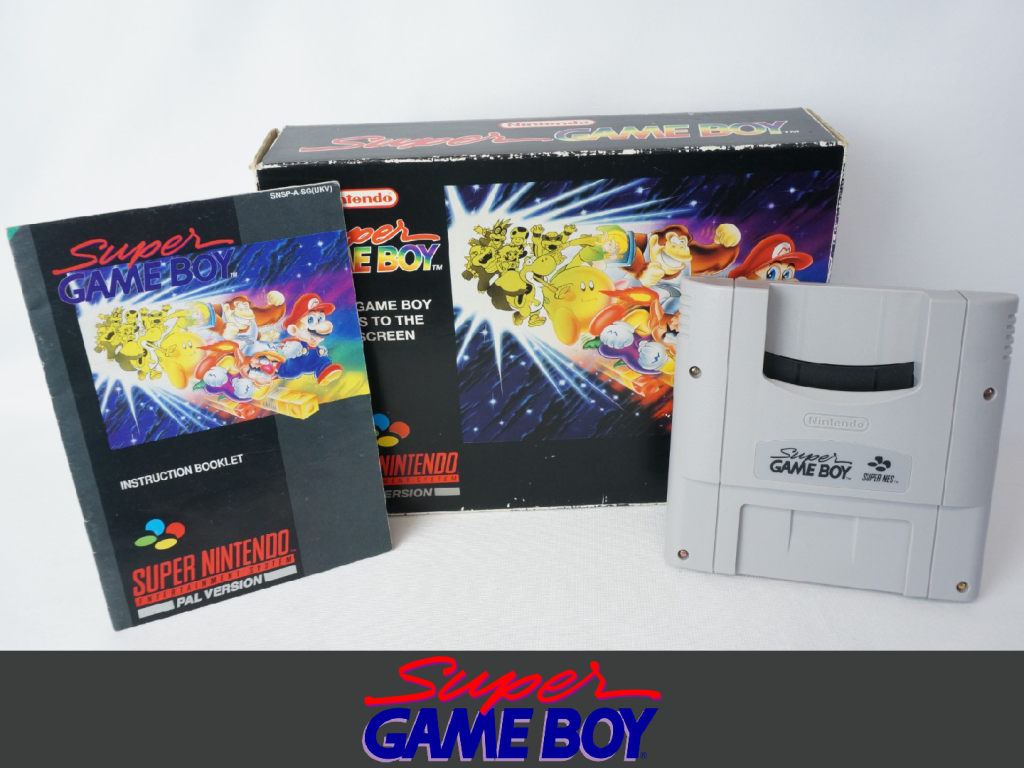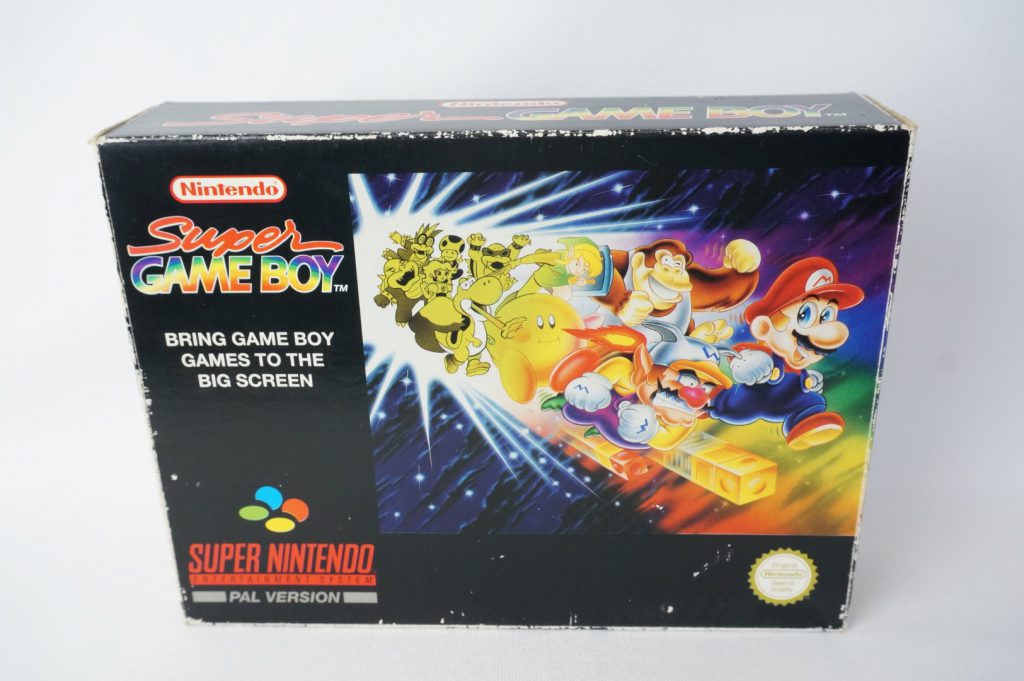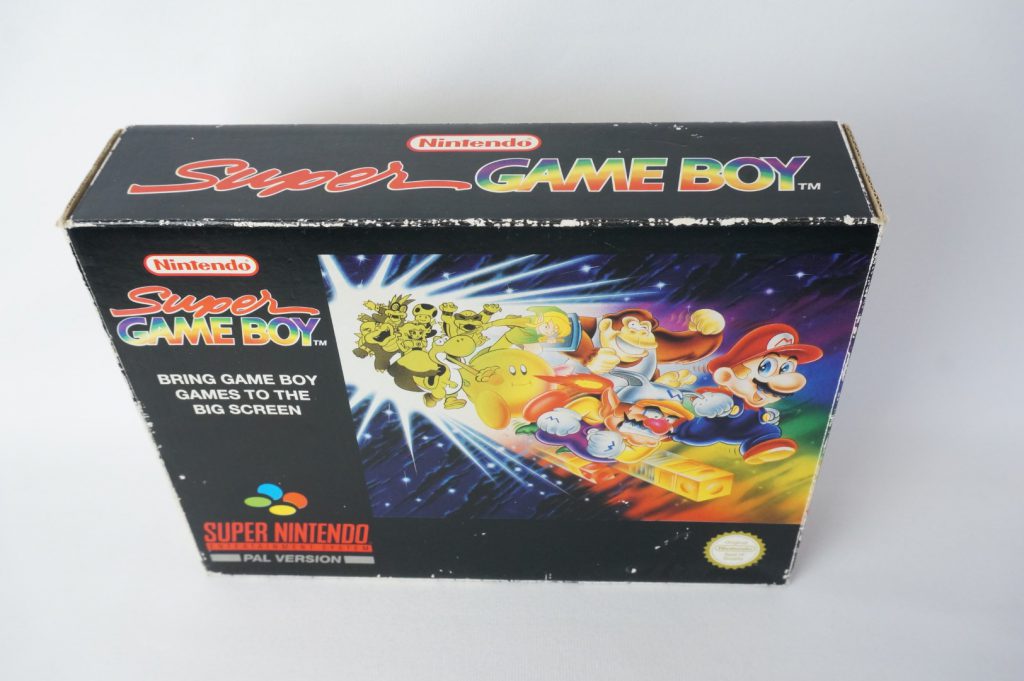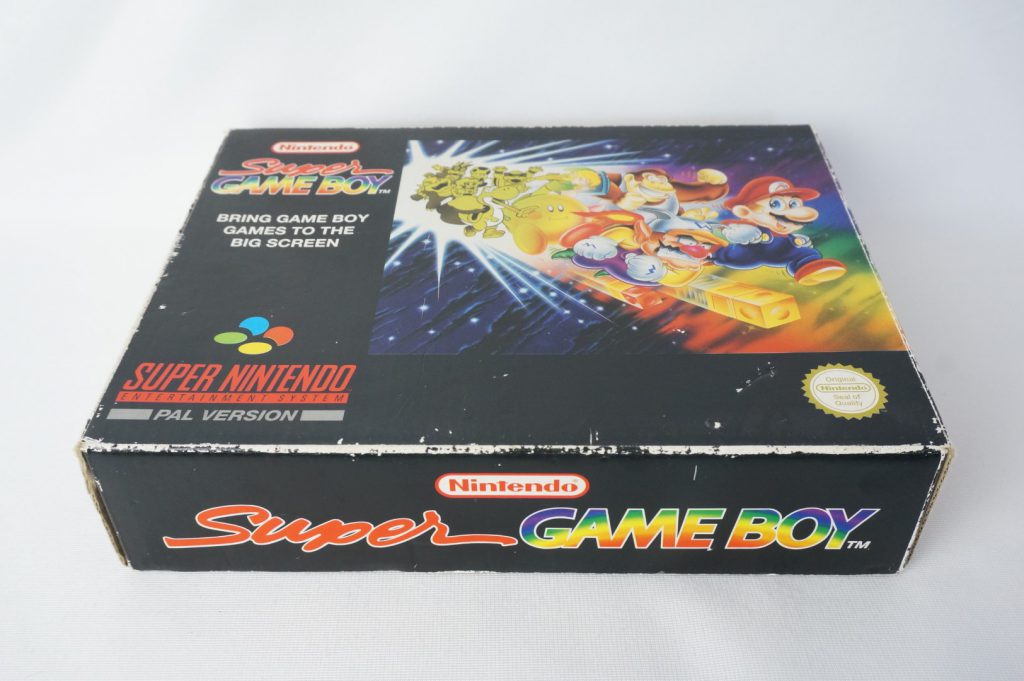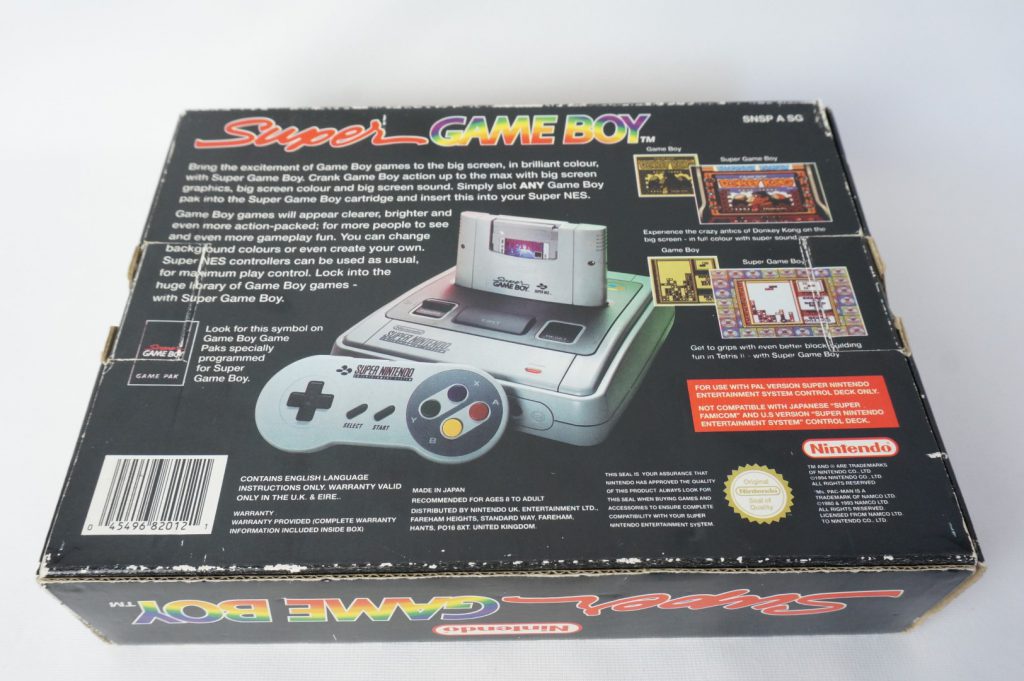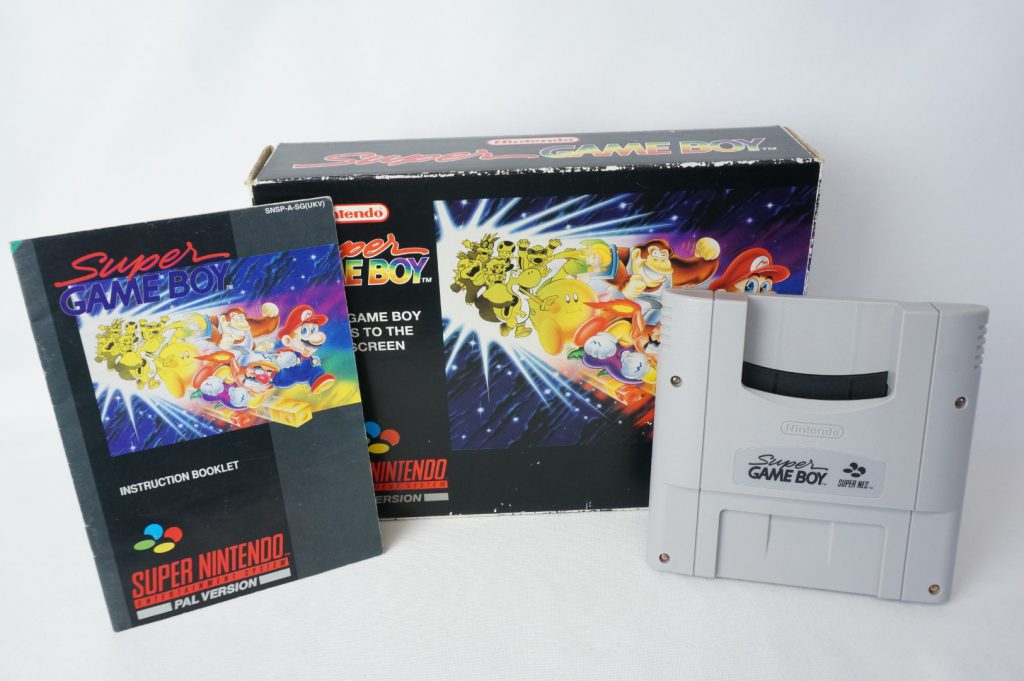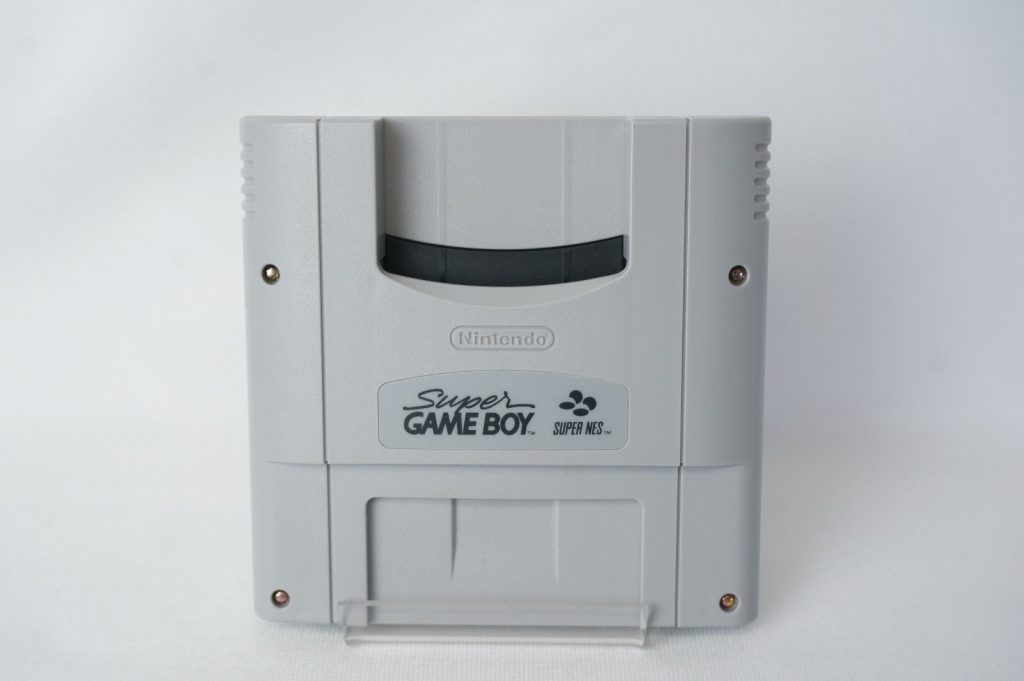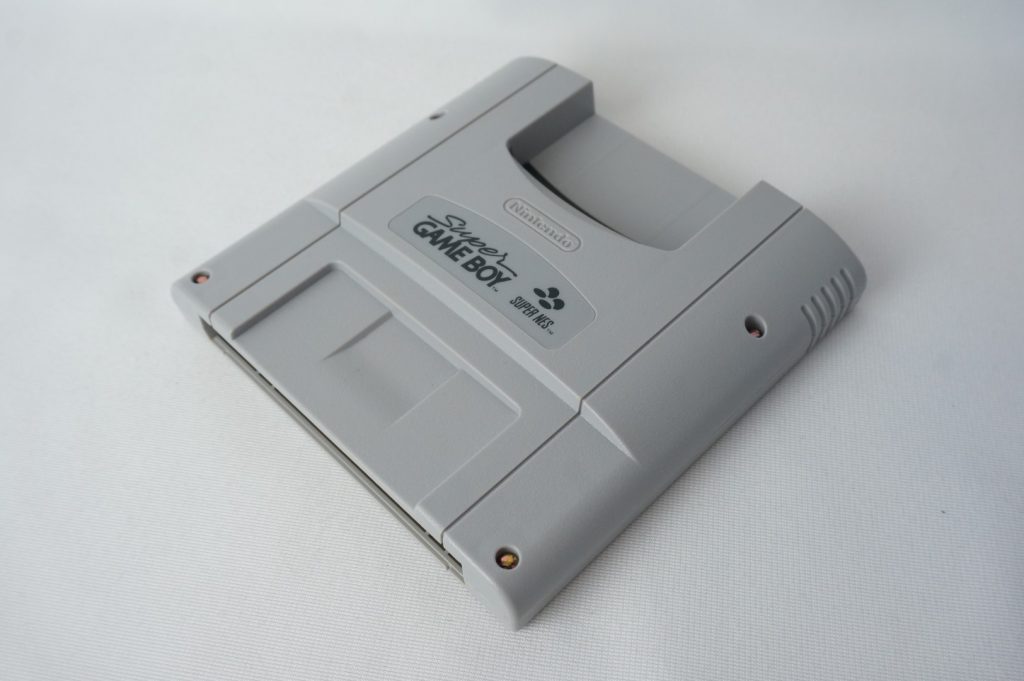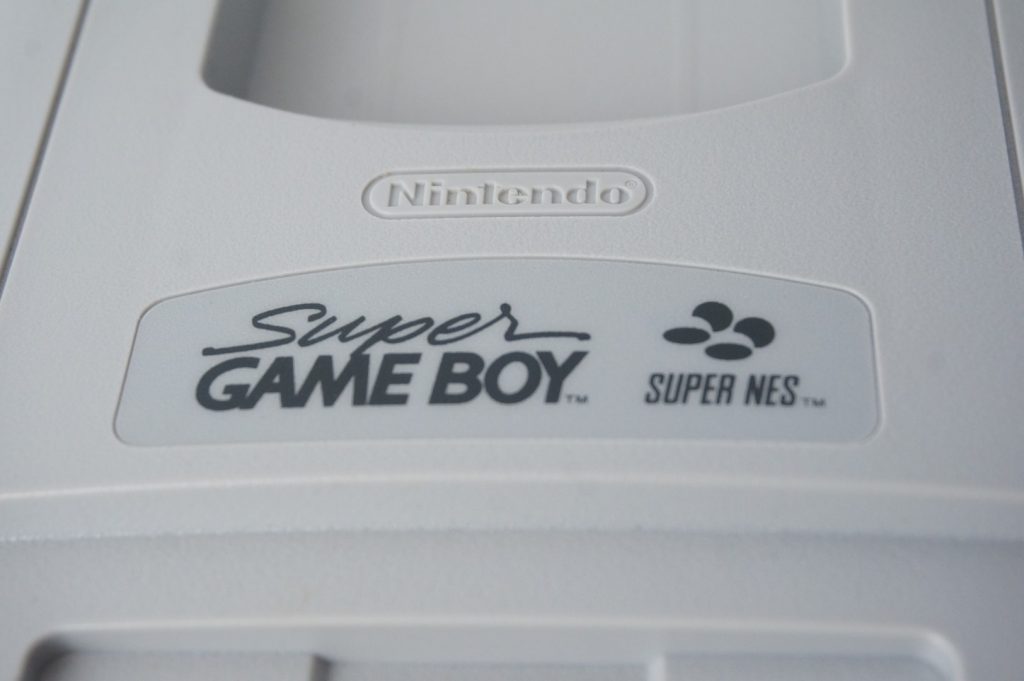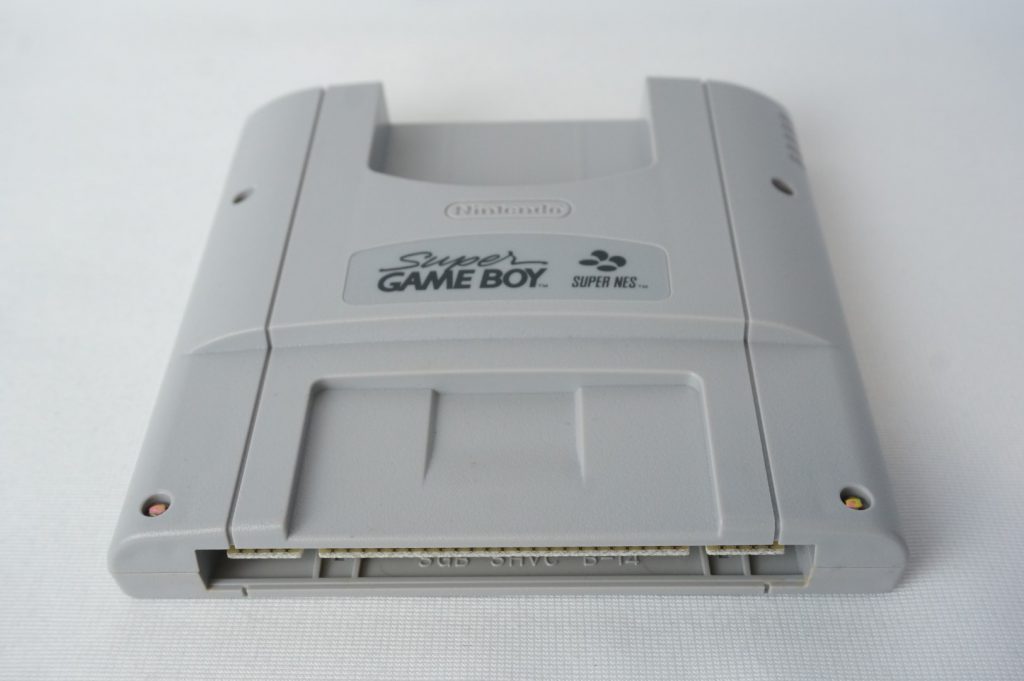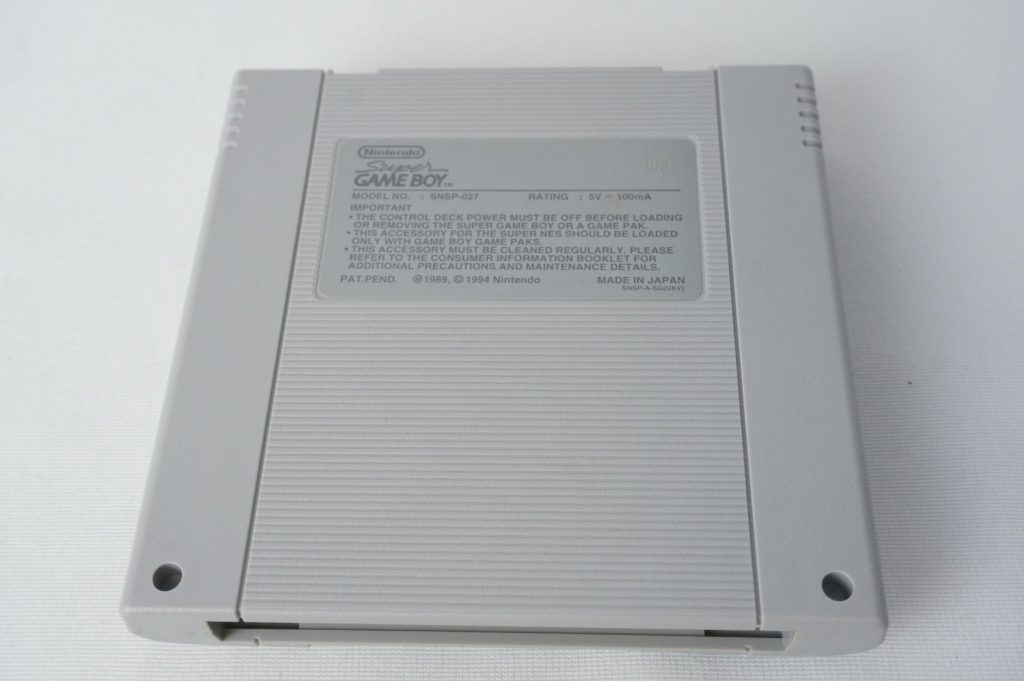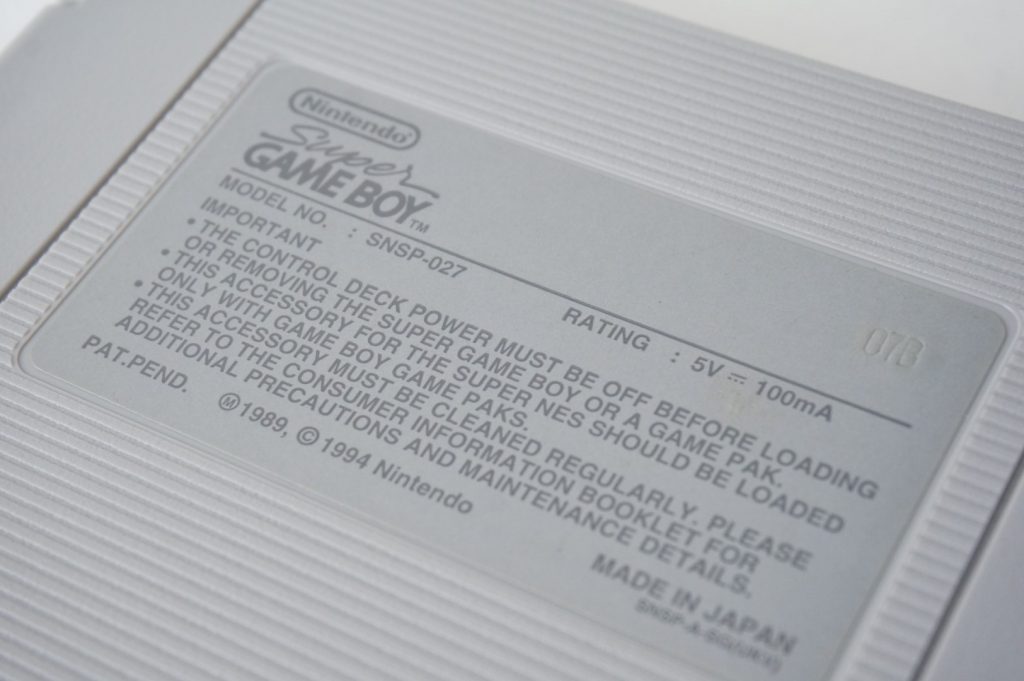The Super Game Boy is a peripheral that allows Game Boy cartridges to be played on a Super Nintendo Entertainment System console. It was released in June 1994
Because the Super NES cannot emulate the Game Boy hardware at full speed, the Super Game Boy actually consists of the same hardware as the original handheld; inside the cartridge is a separate CPU that processes the games while the Super NES only provided means for user-input, output of graphics to the screen, and the additional colouring.
The Super Game Boy is compatible with the same cartridges as the original Game Boy: original Game Boy cartridges, the Game Boy Camera, and dual-mode Game Boy Colour cartridges (in Game Boy-mode). The unit could map the four shades of green to various colours on the screen. Later Game Boy games that were optimized to use the Super Game Boy had additional colour information and could override the on-screen colours, display a graphical border around the screen, and display special background sprites, as seen in the Mario’s Picross title screen.
It is also possible for Super Game Boy games to make use of the Super NES hardware for extra effects, as demonstrated in Contra: The Alien Wars, Donkey Kong, Kirby’s Dream Land 2, A Bug’s Life, FIFA 98: Road to World Cup, Madden ’97, Animaniacs and Toy Story; these games had expanded sound when used with the Super Game Boy. Wario Blast, the Game Boy version of Primal Rage, the Game Boy version of Killer Instinct and several other titles even allowed the second Super NES controller to be used for two-player action. The title screen changed to show that these games had a two-player option, rather than a connection status. Using the Super Multitap, some games even supported four players. The original Super Game Boy does not support game link multiplayer.
The Game Boy version of Space Invaders allowed players to access a Super NES version of the game as well as a coloured version of the Game Boy game.
Some black Game Boy Colour cartridge games also have Super Game Boy enhancements.
The system menu is accessed by pressing the L and R buttons at the same time; the menu has five options to choose from:
- Colour Palette: Choose from one of 32 pre-made colour palettes, the Super Game Boy enhanced palette(s) (if available), or a user-created palette (if available). A few Super Game Boy games will not allow the palette to be changed. Internally, the Super Game Boy includes special palettes for several games that came out before the release of the Super Game Boy; for example, Alleyway, Yoshi’s Cookie, Kirby’s Pinball Land, Metroid II: Return of Samus, and Solar Striker have 1 of the 32 default colours by default.
- Border: Choose from one of 9 pre-made borders, the Super Game Boy enhanced border(s) (if available), or a user-created border (if created).
- Button Setting: Switches between two controller mappings. A few Super Game Boy games won’t allow the controller setting to be changed.
- Custom Colour: Create a custom colour palette and get a password to retrieve it later. If palette changes are disabled within the game, this option will also be unavailable.
- Graffiti: Create a custom border by using several painting tools. If plugged into the second controller port, the Super NES Mouse could be used for this feature.
Some games disable the use of changing colours, so the unavailable options are blacked out.
I purchased the player and box from a Facebook group, in order to make it complete, I purchased the manual from Ebay.
Rating – Complete
Price Paid – £24.49 (Facebook Group and Ebay)

